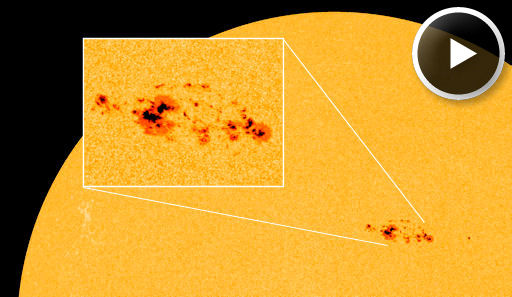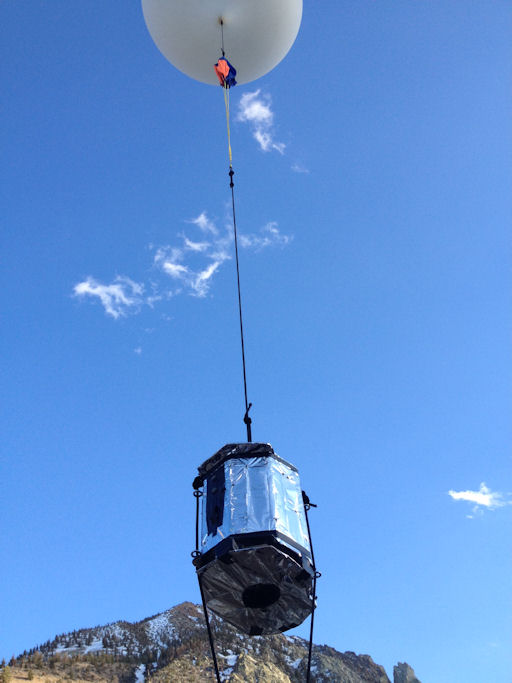They came from outer space--and you can have one! Genuine meteorites are now on sale in the Space Weather Store. | | |
LYRID METEOR SHOWER PEAKS TONIGHT: Earth is passing through a stream of debris from ancient Comet Thatcher, source of the annual Lyrid Meteor Shower. Usually the shower is mild (10-20 meteors per hour) but unmapped filaments of dust in the comet's tail sometimes trigger outbursts ten times stronger. Forecasters say the best time to look is during the dark hours before local dawn on Monday, April 22nd. [photo gallery]
BIG SUNSPOT BOOSTS ODDS FOR FLARES: The rapid growth of sunspot AR1726 continues. Invisible only two days ago, it is now a behemoth more than 150,000 km (a dozen Earth diameters) wide. A 48-hour movie from the Solar Dynamics Observatory shows the active region's development:

The sunspot has a 'beta-gamma' magnetic field that harbors energy for M-class flares. NOAA forecasters put the odds of an M-class eruption today at 10%, but that is probably an underestimate. AR1726 poses a growing threat for significant Earth-directed flares. Solar flare alerts: text, voice.
SPACE WEATHER BALLOON: Yesterday in the Sierra Nevada mountains near Bishop, California, a group of high school students launched a "space weather balloon" into the stratosphere. Their goal is to monitor the effects of solar flares on Earth's atmosphere. Scroll below the image for more information:

The silver capsule, built by Mihai Ciustea of Sammamish WA and launched by the Earth to Sky team of Bishop CA, is bristling with sensors to measure, e.g., ozone, pressure, humidity, acceleration and other variables of interest. The capsule travels to 125,000 feet--well inside Earth's ozone layer--and lingers there for approximately two hours before parachuting back to Earth with the data. The April 20th launch was a test flight to measure baseline levels when solar activity is relatively low.
The capsule also serves another purpose: It is a bacteria collector. A door at the bottom of the capsule can open, guiding air into a filter designed to capture microbes during the flight. Mihai Ciustea hopes to find ice-nucleating bacteria and other lifeforms living high above Earth's surface. Stay tuned for updates about this mission!
Realtime Space Weather Photo Gallery
Realtime Comet Photo Gallery
Realtime Noctilucent Cloud Photo Gallery
[previous years: 2003, 2004, 2005, 2006, 2007, 2008, 2009, 2011]
Potentially Hazardous Asteroids (
PHAs) are space rocks larger than approximately 100m that can come closer to Earth than 0.05 AU. None of the known PHAs is on a collision course with our planet, although astronomers are finding
new ones all the time.
On April 21, 2013 there were 1397 potentially hazardous asteroids.
Notes: LD means "Lunar Distance." 1 LD = 384,401 km, the distance between Earth and the Moon. 1 LD also equals 0.00256 AU. MAG is the visual magnitude of the asteroid on the date of closest approach. | | The official U.S. government space weather bureau |
| | The first place to look for information about sundogs, pillars, rainbows and related phenomena. |
| | Researchers call it a "Hubble for the sun." SDO is the most advanced solar observatory ever. |
| | 3D views of the sun from NASA's Solar and Terrestrial Relations Observatory |
| | Realtime and archival images of the Sun from SOHO. |
| | from the NOAA Space Environment Center |
| | the underlying science of space weather |

